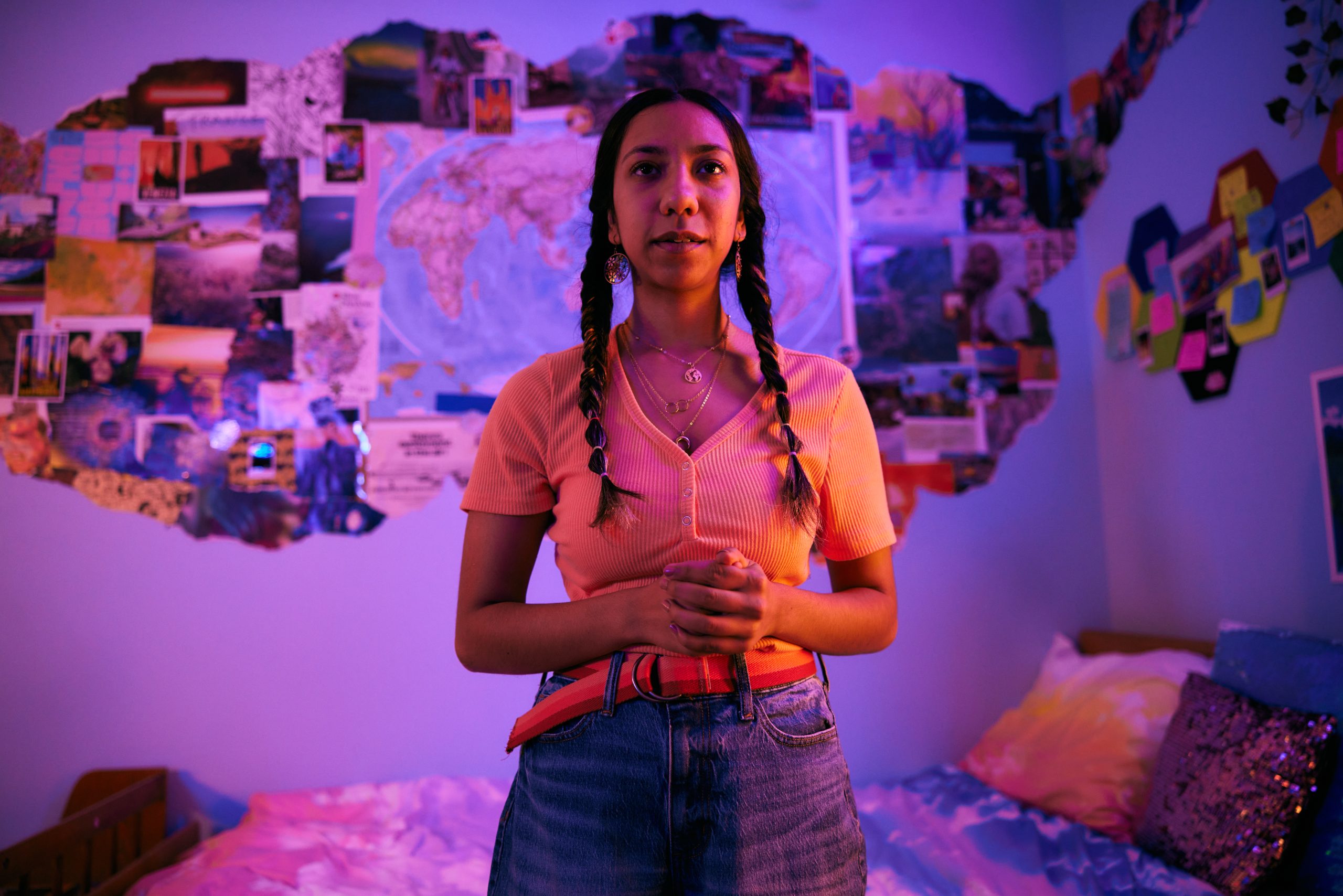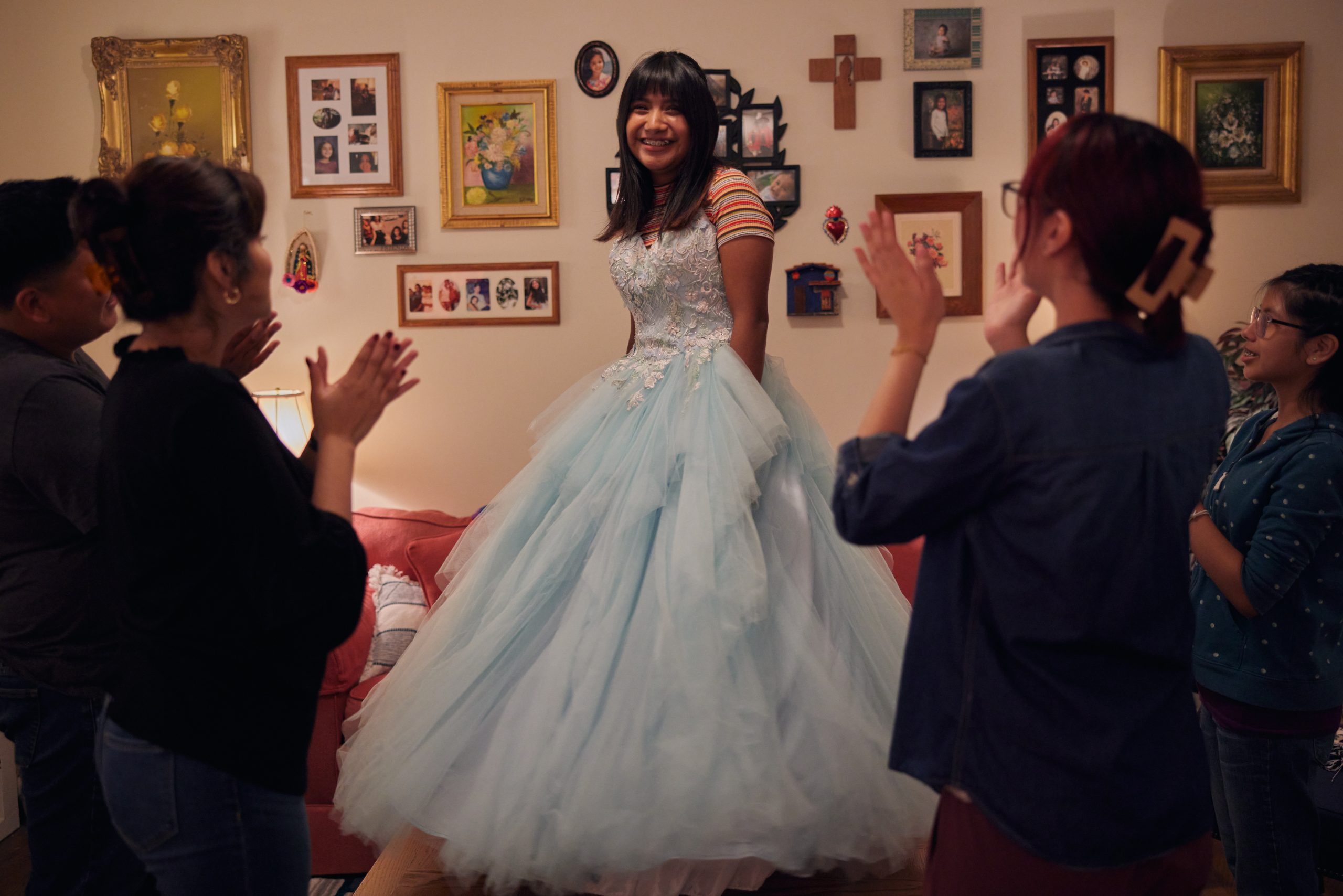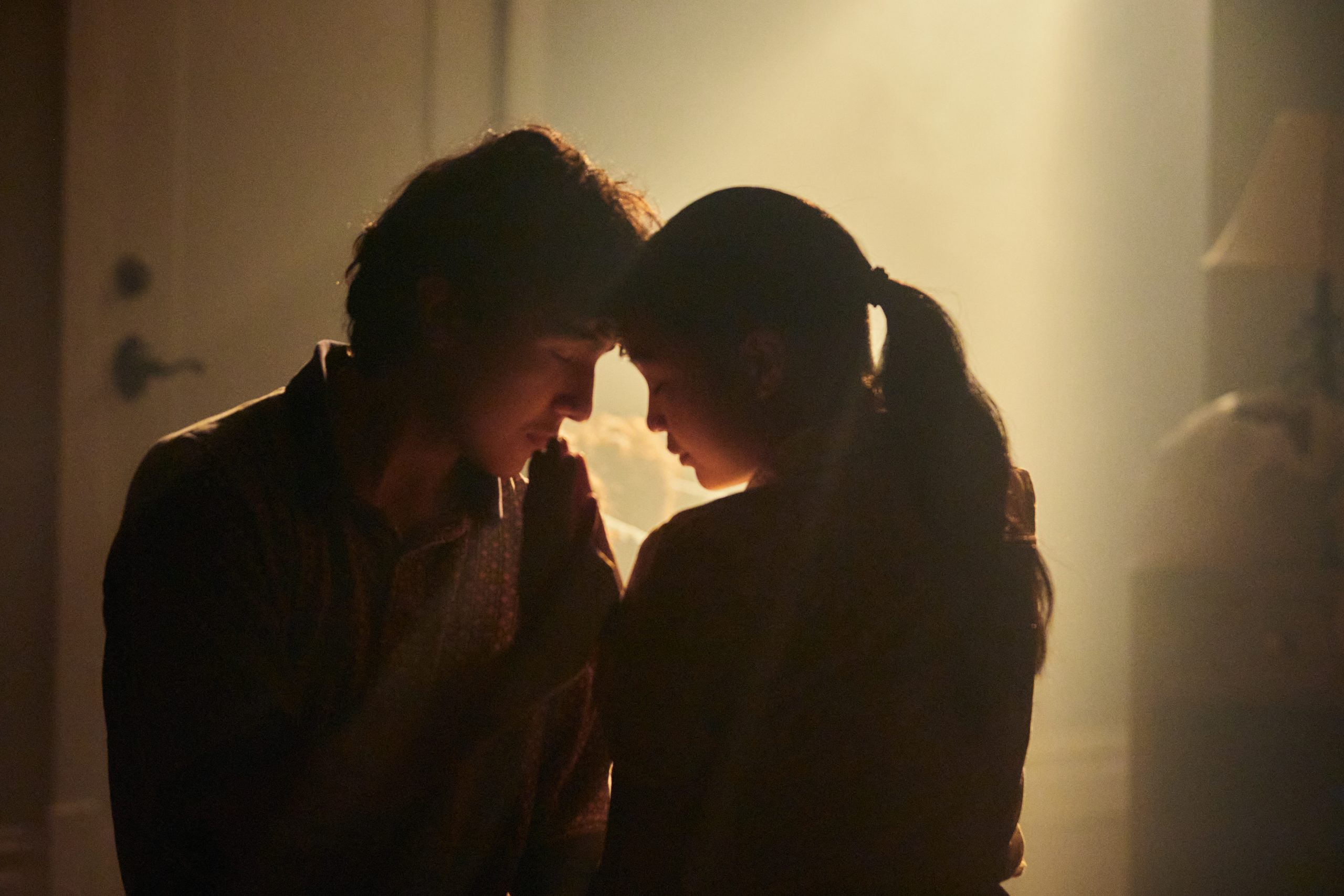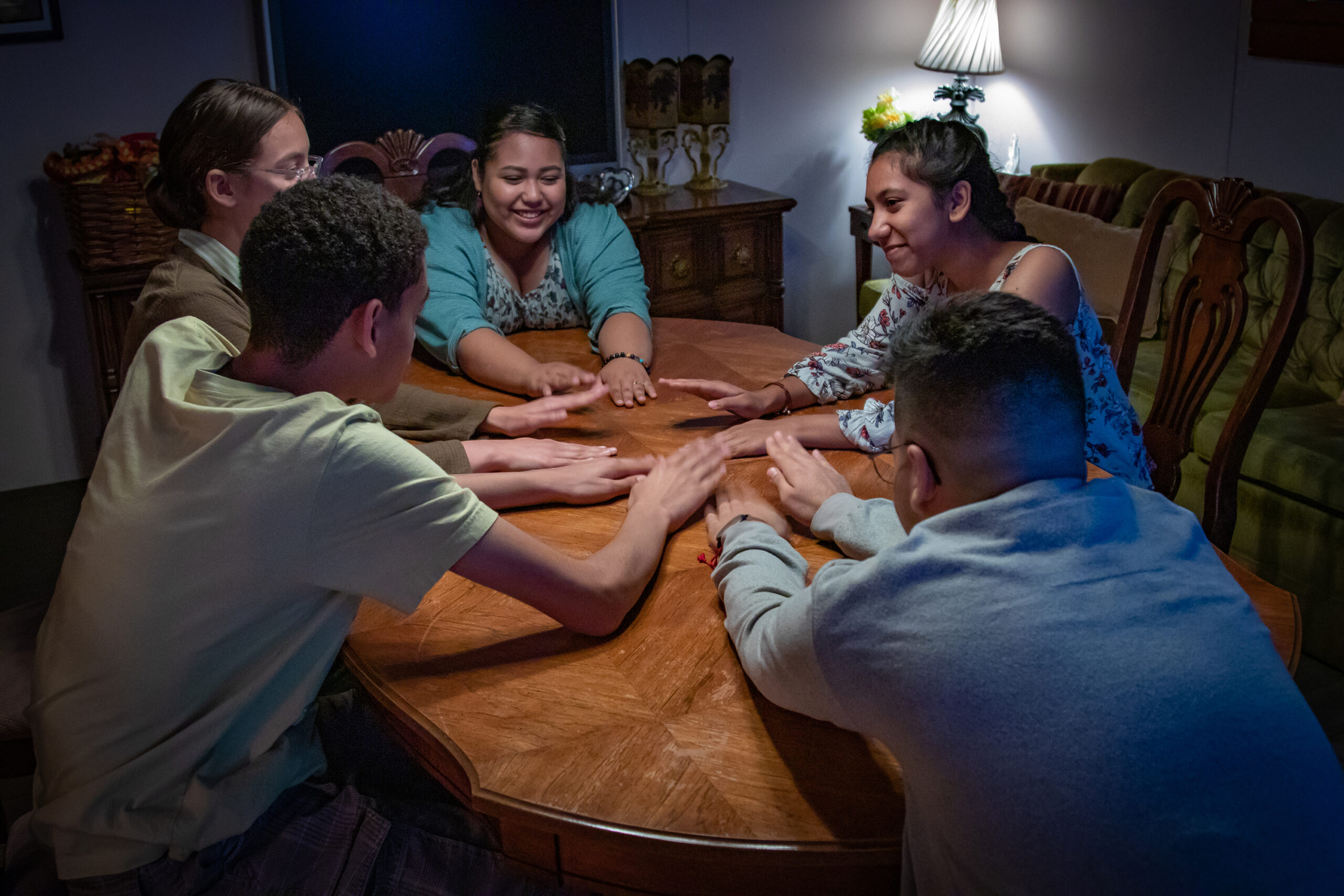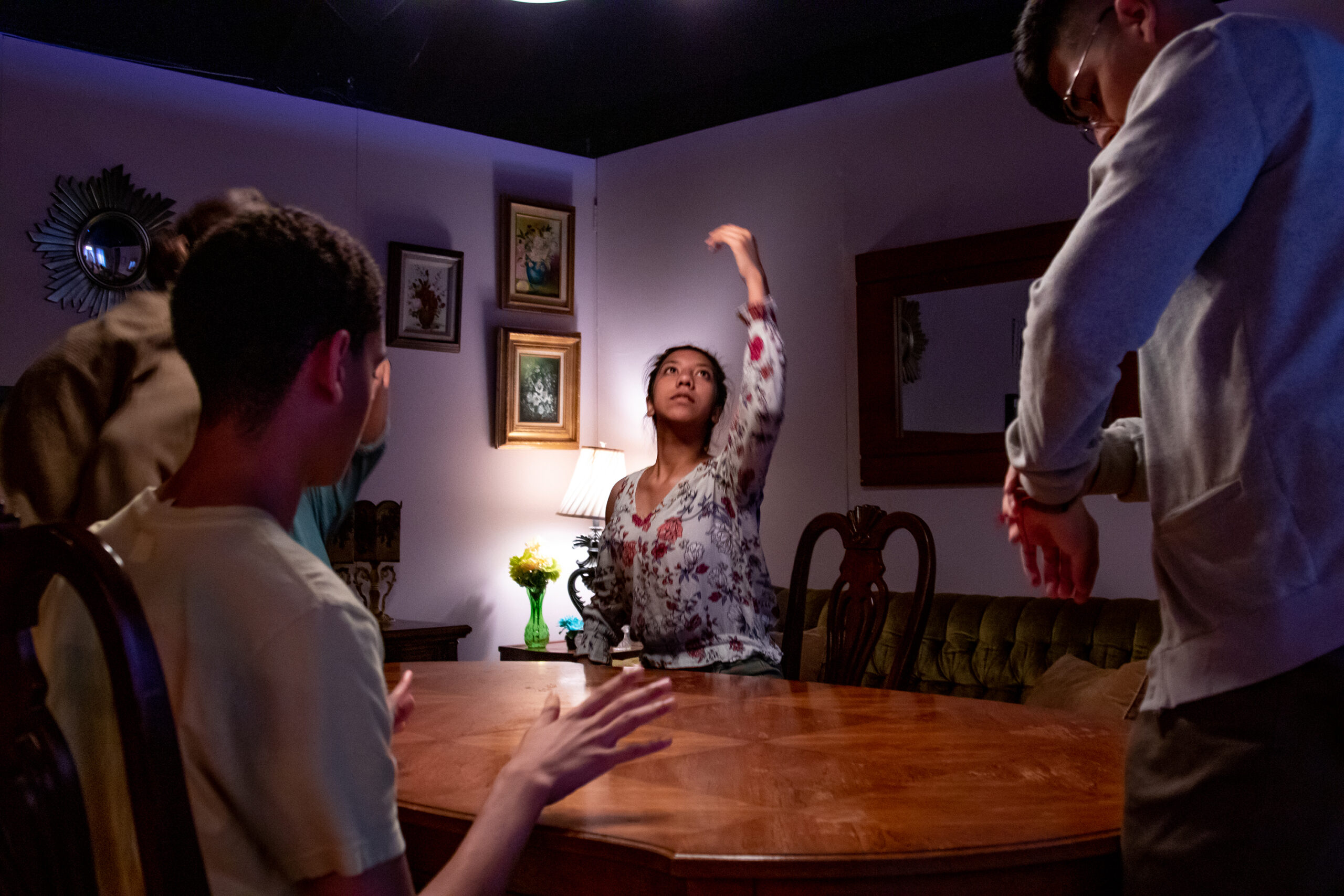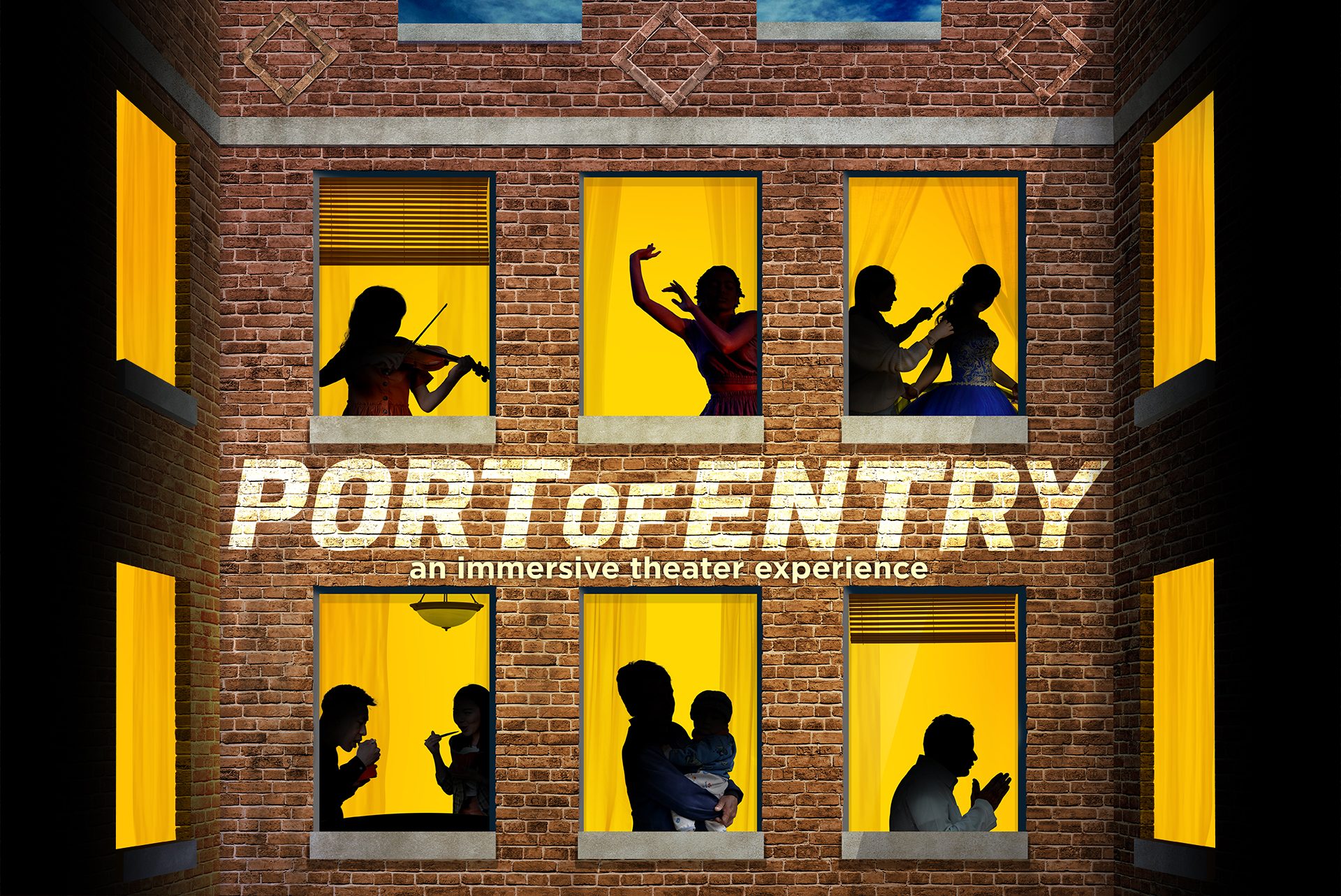Port of Entry
“One of the defining elements of Albany Park since the 1970s or ’80s has been that it’s a place where people from all different parts of the world live side by side in the same building. Because of the changing courses of history, globalization, and the conflicts in Asia and in Latin America that displaced people, folks who never would have crossed paths are now next-door neighbors.”
—David Feiner, Albany Park Theater Project
Port of Entry invites you to step inside the real-life stories of immigrants and refugees from all parts of the world living side-by-side in a single apartment building in one of the country’s most diverse immigrant communities: Chicago’s Albany Park, home to nearly 50,000 people who speak more than 40 different languages. In each performance, 26 young performers portray immigrants from around the world as they guide 28 audience members into an iconic courtyard apartment building created within a 1929 warehouse. There they invite the audience to eat and drink and play games together as they share their characters’ stories. Co-created by Chicago’s Albany Park Theater Project and Brooklyn’s Third Rail Projects and performed by APTP’s youth ensemble, Port of Entry takes you on a journey through time and across cultures.
Albany Park Theater Project and Third Rail Projects began their collaboration in August 2018. Over the course of seven days in Chicago, 30 teenage artists and a dozen adult artists interviewed residents in a half-dozen Albany Park apartment buildings, devised scenes inspired by their research, stitched the scenes together into a loose structure, and shared the result with a handful of invited audiences. Much of the following summer was spent developing story lines, scenes, characters, designs, and technology for the show.
In March, 2020, the Reva and David Logan Foundation purchased a vacant Albany Park commercial building and invited APTP to create Port of Entry’s world in it. Constructed in 1929 as Fernstrom Fireproof Storage, the 12,000 square foot building was turned into a warren of living rooms, hallways, bedrooms, courtyards and stairwells. Behind the building’s Art Deco facade, APTP’s teen artists would bear witness to the lived experiences of their community — immigrants from all parts of the world — at dining tables, in secret bedroom sanctuaries, on back porches, in quiet corners and lively kitchens.
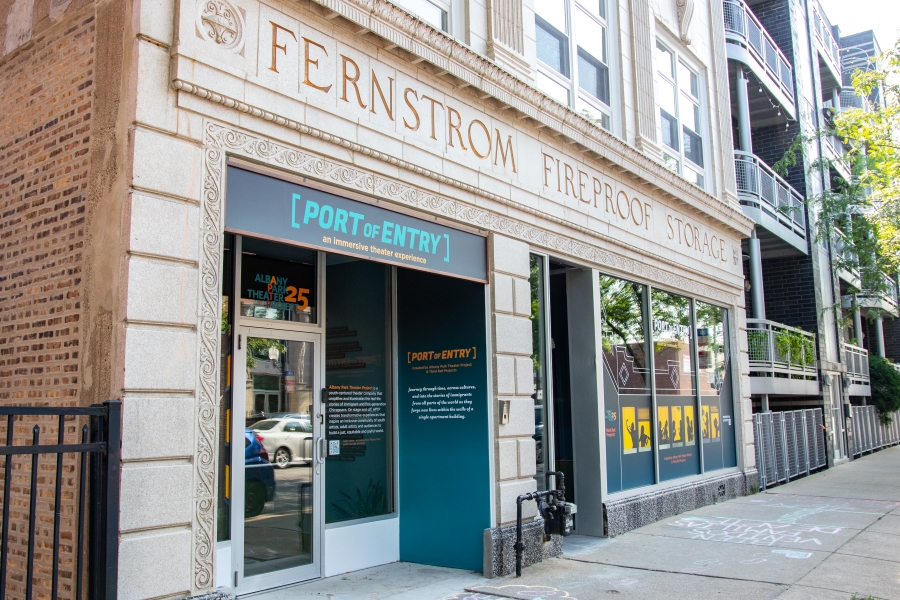
Since 1997, the Albany Park Theater Project has premiered two dozen original theater productions inspired by real-life stories of hundreds of people in Albany Park and other immigrant communities in Chicago. APTP’s teen ensemble has performed for more than 60,000 people, opened the Albany Park neighborhood’s first performing arts space, and filmed two of its original performances for broadcast on Chicago’s PBS affiliate. APTP has received numerous awards, including a MacArthur Foundation Award for Creative and Effective Institutions, and is known for its youth development and college access programs, which help prepare its youth ensemble members to lead civically engaged lives.
In 2013, APTP’s co-executive director, David Feiner, and associate director Maggie Popadiak attended Then She Fell, the acclaimed immersive production from Third Rail Projects that was inspired by the life and writings of Lewis Carroll. They were captivated by Third Rail’s work and reached out to see if some sort of collaboration would be possible.
Third Rail Projects is a leader in creating site-specific, immersive, and experiential performances. Headed by artistic directors Zach Morris, Tom Pearson, and Jennine Willett, the company is dedicated to re-envisioning ways in which audiences engage with contemporary performance. Their award-winning immersive hit Then She Fell, named one of the top ten shows of 2012 by The New York Times, enjoyed a sold-out run for seven years until the pandemic forced it to close. In addition to its own award-winning projects, Third Rail was part of the creative team for the Emmy-winning virtual reality adaptation of Neil Gaiman’s Wolves in the Walls. In 2016, its artistic directors were named among the 100 most influential people in Brooklyn culture by Brooklyn magazine.
IN THE MEDIA
“Nestled between the Chicago River and Edens Expressway on the northside of Chicago sits Albany Park. This neighborhood is reported to be one of the most diverse areas in the United States, housing foreign born residents from Latin America, South Asia, and the Middle East. On the neighborhood’s southern border sits Fernstrom Fireproof Storage, built in 1929 and spanning 12,000 square feet across three stories. But instead of storing family heirlooms and furniture for safe keeping, the building now houses a living artistic embodiment of its residents’ lives. . . .“Throughout Port of Entry, as tenants convey stories of mundane or intense struggles, the natural lighting and cityscape sounds fade away, replaced with anything from projection mapping to single spotlights illuminating the space underscored by sweeping orchestrations or a cacophony of discordant sounds. These dramatically emphasized moments drew me into each tenant’s story, their joy and sorrow intensely personified. [But] the most captivating, compelling element of Port of Entry is its performers. . . . It’s been a decade since I’ve seen such stellar performance work in Chicago.”
—No Proscenium
“Patrons seeing the play will enter a commercial building at 3547 W. Montrose Ave. and walk into the world of Port of Entry — a three-story, multi-unit apartment complex that itself becomes a character. [They] will walk through a courtyard before going into apartments where the stories of four families — spanning 100 years — will unfold. The 28 people in the audience might find themselves playing a game of loteria or helping cook a meal through the course of the two-hour, immersive production. ‘We kind of think about immersive theater as a multi-sensory experience,’ says Jennine Willett, co-artistic director of Third Rail Projects. ‘It’s not just what you see. It’s what you’re sitting on, what you feel, what you smell, what you hear, what you touch. All of the senses are engaged. ”
—Chicago Sun-Times
“You are led by a cast member into the apartment building (it’s not real, but you’d swear otherwise) as if you were a guest of the entire building. You share drinks and snacks and watch cultural rites of passage. You share worry and sadness over a family member struggling to cross a border or the loss of employment. You spend time in kitchens and living rooms and even outside on what feels like a porch or a pocket urban backyard.
“From time to time, you are taken off into someone’s private space; not everyone experiences the same show and although the piece is hyper-realistic . . . it is not confined by prosaic reality. Young people take you into their closets and show you their worries and dreams, often physically manifested by elements of the natural world. Often, you do stuff with the cast: you make crafts, you dance, you take part in rituals, you play Lotería. It’s all warm, forgiving, fun.
“Neophytes at APTP often are blown away. They don’t always know why, although the truth is that it has to do with emotional intensity and engagement. . . . Port of Entry is an astonishing piece of work.”
—Chicago Tribune
“Planning for Port of Entry began in 2018, ‘right in the middle of the Trump presidency,’ Feiner notes. One of the apartments serves as the home for a Mexican family, where they receive a phone call letting them know that the father has been deported. ‘We were devising that and rehearsing it in the summer of 2019, when there were daily rumors moving around over social media that ICE agents were about to swarm Albany Park communities.’”
—Chicago Reader
